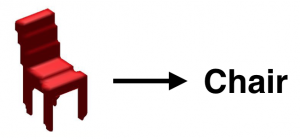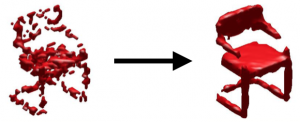With the advent of affordable depth sensors, 3D capture be- comes more and more ubiquitous and already has made its way into commercial products. Yet, capturing the geometry or complete shapes of everyday objects using scanning devices (e.g. Kinect) still comes with several challenges that result in noise or even incomplete shapes. Recent success in deep learning has shown how to learn complex shape distributions in a data-driven way from large scale 3D CAD Model collec- tions and to utilize them for 3D processing on volumetric representations and thereby circumventing problems of topology and tessellation. Prior work has shown encouraging results on problems ranging from shape completion to recognition. We provide an analysis of such approaches and discover that training as well as the resulting representation are strongly and unnecessarily tied to the notion of object labels. Thus, we propose a full convolutional volumetric auto encoder that learns volumetric rep- resentation from noisy data by estimating the voxel occupancy grids. The proposed method outperforms prior work on challenging tasks like denoising and shape completion. We also show that the obtained deep embedding gives competitive performance when used for classification and promising results for shape interpolation.
Architecture:
Downloads:
Reference:
@inproceedings{sharma16eccvw,
title = {VConv-DAE: Deep Volumetric Shape Learning Without Object Labels},
author = {Abhishek Sharma and Oliver Grau and Mario Fritz},
booktitle = {Geometry Meets Deep Learning Workshop at European Conference on Computer Vision (ECCV-W)},
year = {2016}
}




